 |
||
LSR 2-1 Buell
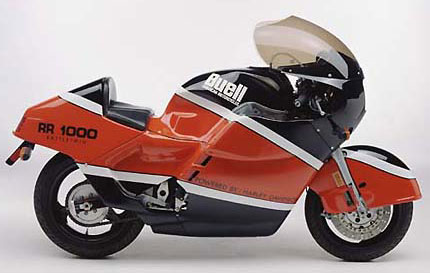
When these things came out, and we were feeling sort of stupid, we custom made a few exhausts for them as well as welding up some fairing supports to keep the parts from flapping around. Jay Springsteen rode around on one we worked on.. We even got suckered into building a downdraft dual throat carb set up for a later version...we don't know what happened to that effort. We just remember not getting paid for 30 hours of work.

First, the shock, working in reverse fashion, was stuck under the bike and the exhaust was placed next to it keep it warm and to share in a common duty of snagging speed bumps. The exhaust won the ugly prize didn't do anything to help performance.
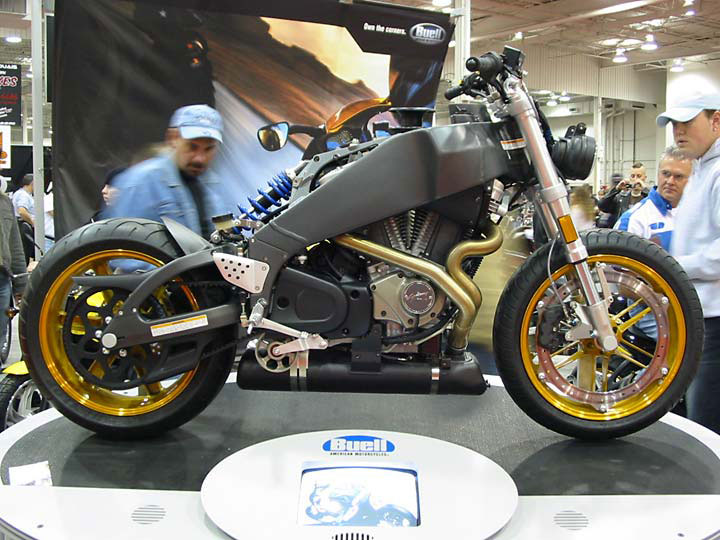
They sort of morphed into these things where all sorts of ideas get put into play. We never have understood the "Mass Centralized Muffler" idea. This seems to have come about in a historical fashion i.e. it was there before so let's keep it there. Heavy and ugly and no tuning seems to be the design mantra. Sort of a volumetric skid plate. The shock got moved up, up and away so the muffler lost a companion.
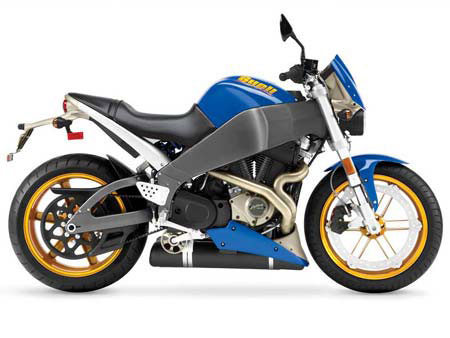
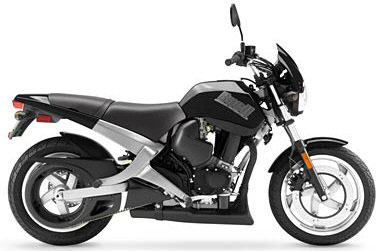
The muffler seems to have found a home down below in all models. We'll be taking a stab at Buell exhausts soon. It's a situation where the design fights a correct solution. We're used to problems like this and will be offering some new solutions.
Of course they still don't have the power to wrestle with a 600 but that's another issue we will be addressing.
Screaming Eagle Super Tuner...SEST (discontinued)
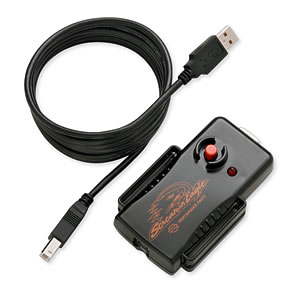
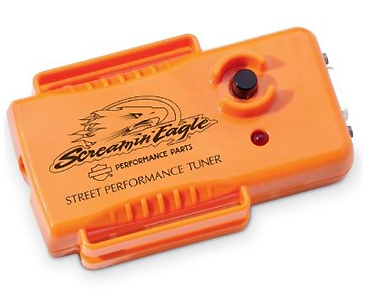
"SEST" or Greek for the worst written instruction manual we've ever seen. We defy you to figure out how to get various charts and graphs to open and how to get to the advanced versus basic tuning options. We suggest you look around the internet as the manual is of little help.
A few years ago we bought one of these to see what was involved. If you can figure out the software navigation issues and install a map that somewhat matches your bike, you simply ride around, observe the RSR Air Fuel Ratio Meter display and make edits. The tuning is fairly straight forward. Without the Dual Gauge we don't know how you would do it. We just ride.
Harley had to recall these after being fined. They are no longer available.
System Approach to Tuning
1. LSR 2-1 Exhaust... Proven performance gains.
2. RSR Air Fuel Ratio Gauge...Observe in the real world. Dynos are great but we don't ride them.
3. TTS MasterTune Software... Make adjustments based on observations
Steve Cole's TTS MasterTune
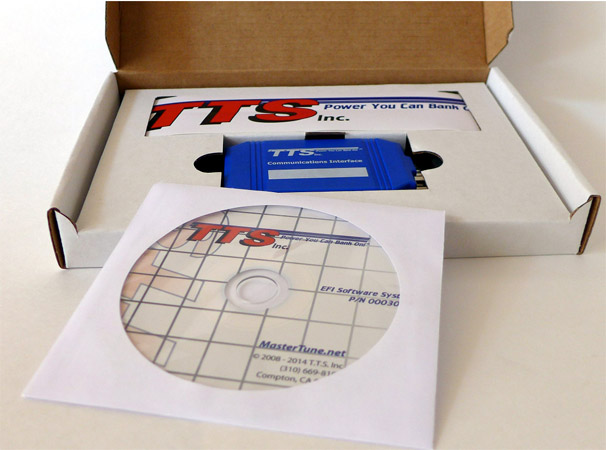
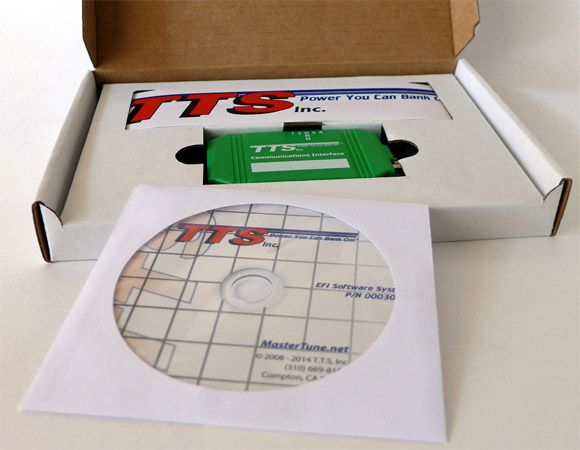
Before the Screaming Eagle Super Tuner (SEST)
there was the SERT or Screaming Eagle Race Tuner. Acronyms, what would
we do without them? Steve Cole
was the guy behind the SERT until Harley decided to go with another
contractor. Money. It's always about the money. Since Steve designed
the original stuff, this new stuff i.e. TTS MasterTune is easier
to use and has one benefit that the "SEST" does not have...You have the
ability to save and restore your original calibration. In addition with
the Green Analog Interface Model you can log up to four analog channels
like Wideband Sensors.
We prefer software solutions to tuning late model efi Harleys and not use any add-on boxes or to replace the entire system with some "self-tuning", throttle-angle based, wide band controller. There are simply too many problems technical-wise with wide band sensors...Stuff they do not tell you about like pressure and temperature compensation issues and sensor latency. You are better off with the OEM O2 sensors. You won't believe this but that's your problem.
One point no one is going to tell you is that Harley has hidden tables that will richen up your injectors if you hold the bike under load, like on a dyno or wide open throttle for any amount of time beyond "x". They don't want you to fool with this. Guess what happens to those people who tune under full load.
We've used
both the SEST and the TTS Master Tune. Both work about the same with both based on VE Tables. The
TTS MasterTune is a more friendly system and has more features.
USB
Tuning cables must be purchased separately. Three versions are
available: Specify Cable Number when ordering.
(1) Part # 2000014: 4 Pin J1850 (older bikes). $42.50 list price.
(2)
Part # 2000011: CAN 6 Pin Cable Kit (newest bikes). $42.50 list price.
(3)
Part # 2000014A: 2014 Touring models Only. CAN 6 Pin (have different pin allocations). $42.50 list price.
The Total Cost for a single bike TTS Master Tune (Blue) is $445.00 (tuner no cable). The Total Cost for a TTS Master Tune (Blue) Two Bike Programmer is $645.00 (Tuner no cable).
The Total Cost for a single bike TTS Master Tune (Green) is $595.00 (tuner no cable).
A PDF Tuner Guide explains the operation of the TTS software.
In
the late 70's, all through the 1980's and into the mid 1990's we used
to spend about 5 months out of every year tuning things. No time for
that anymore. It's best that you tune your own bike...add up the hours
and write yourself a hot check. Or just pay somebody. We use a Supeflow CycleDyn Dyno and we ride in the real world.
Soot
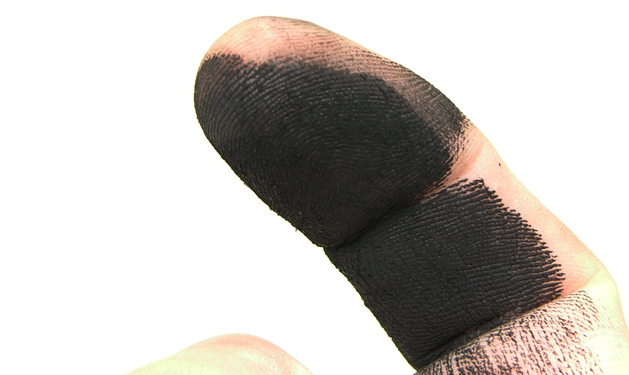
Whenever you look at an exhaust and see it caked in black soot you know the bike is not running or tuned correctly. Back in the mid 1980's we did a carburetor development program for Keihin Corporation for their 41mm CR Race carbs on both Shovelheads and the new Evolution motors. When we were finished the bikes got 56 mpg cruising and 46 mpg if you ran them harder...and after 500 mile tests the pipes were perfectly clean inside and the exhaust ports were dead clean.
If you take the exhaust
system off a modern Closed Loop BMW, as we have, you will find them
dead clean or whitish inside. Harleys should be the same.
We always ask what mileage
people get from their "tuned" or modified Harleys after "Dyno
tuning"....The universal answer is 37 mpg or less. If they don't know,
we ask them if they have to gas at 100 miles. Most do.
Once a customer bought an exhaust from us and took his bike to two different dynos in search of the "117 Hp" he was looking for for his 103...He got 110Hp. After pissing and moaning we told the guy to give us our exhaust back and we found it caked in soot. So much for tuners and their tail pipe sniffers that see lean reversions...They just kept adding fuel. You tell the customer to put on our RSR Air Fuel Gauge to monitor the mixtures F/R in the real world...No, they want a "Dyno Tune". We have dynos...we know what they do and can't do.
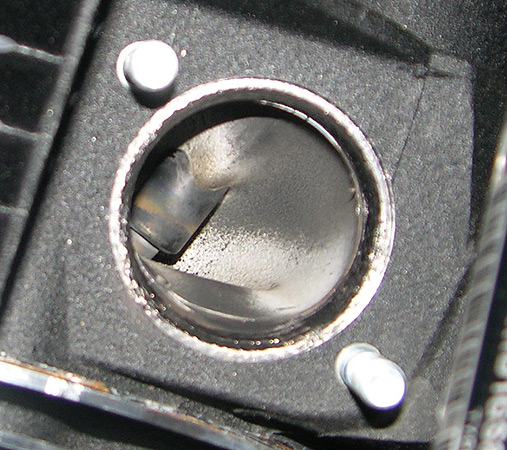
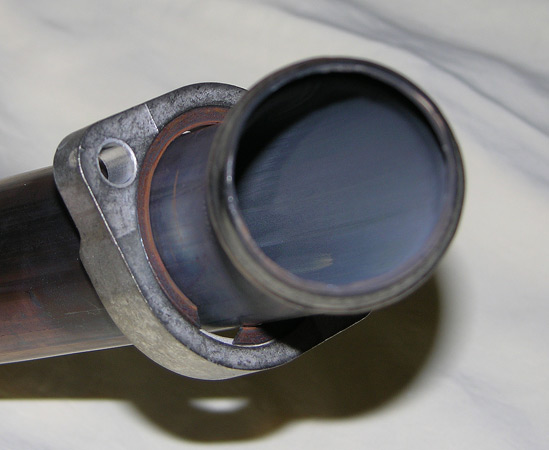
Pictured above is the exhaust port from a 2017 Dyna Low Rider S with about 100 miles on it. No soot. Delphi engineers seem to have done a very good job. Looks like the port you would see on a BMW. Now, when your "Tuner" gets finished with it, it will most likely be full of soot. Logic plays no part in people and their toys. EFI is complex...put in different cams, change air cleaners, port the heads and all this goes out the window. Brave new world.
No soot.
Fuel Injection..A Reality Check
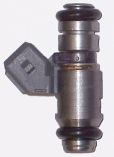
OEM Harley Delphi Injectors
come in various ratings: 3.91 grams/second; 4.35 grams/second; 4.89
grams per second (CVO); and 6.00 grams per second. These ratings are
static i.e. shorted open. Pulsed static is about 90% of this i.e. what
you could expect if you maxed them out in your ecu calibration
software. If you hold them to an 85% duty cycle they, respectively,
offer the following horsepower potentials: 105 hp; 117 hp; 131 hp and
161 hp. Now, you can squeeze more out of them by going past 85%, but
this is the point where they are still controllable.
We get calls from people
building wazoo big engines and they are still running the stock
injectors. We suggest you get the right injectors for your engine
building projects. We offer a several calculators for those messing
with efi systems. Fuel Injector Calculator Professional Injector Pulse width Calculator.
Band-Aid...Not Needed
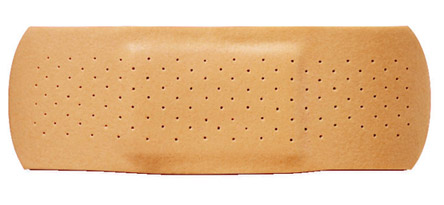
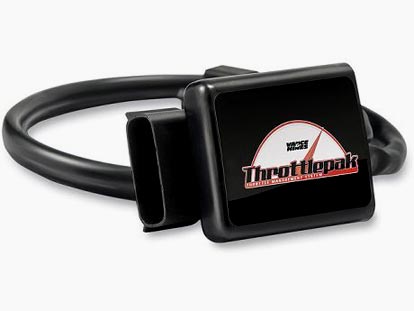
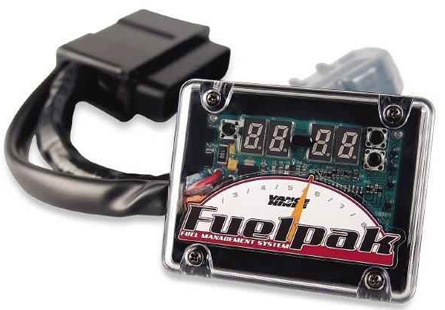
If you have a late model Harley with a Fly-By-Wire throttle you do not need an add-on gizmo. We suggest you get Steve Cole's TTS Master Tune software described above. When purchased with RB Racing exhausts and turbocharger systems we offer a $50.00 discount i.e. $375.00 v $425.00 list. TTS MasterTune allows you to adjust your electronic throttle without the expense of additional add-on devices as well as your fueling and everything else in the Delphi ECU.
New Small (12mm) and Older (18mm) O2 Sensors


In 2010 FLT/H series went to the new small heated O2 sensors. The Dynas and Softails went to these in 2012 and the Sportsters in 2014.
We are tooled for these smaller sensors on all the newer models. The small O2 Sensor models have a floating ground voltage offset that has a complex scheme that varies the signal to meet emissions purposes. If you think you are going to trick these you are in for a surprise.
You must specify the year of your motorcycle when ordering the RSR Dual O2 Gauge. Models with the small OEM O2 sensors will require two 18mm O2 ports in addition to the 12mm ones to monitor your bike as you ride. Our RSR Dual Gauges will monitor the 18mm high temperature O2 sensors we supply. It is the only method to monitor both front and rear cylinders of your bike as you ride. Real world observations to perfect your tune. Better than a dyno which tends to overheat your motor quickly skewing your tune.
RSR Air Fuel Ratio Gauges...Real World Tuning
The Mother of all gauges! Not a gauge, but a precision tool that will tell you exactly what your engine is doing in real-time. Gives you instantaneous read-outs of air/fuel ratios from 17:1 to 10.5:1 and indicates maximum power ratios. Four color display is easily read in direct sunlight and automatically dims at night. Waterproof, billet aluminum construction. Your significant other will cheat on you but this gauge will never lie! It won't keep you warm at night, but a perfectly running engine will look and sound the same when you wake up next to it the morning after.
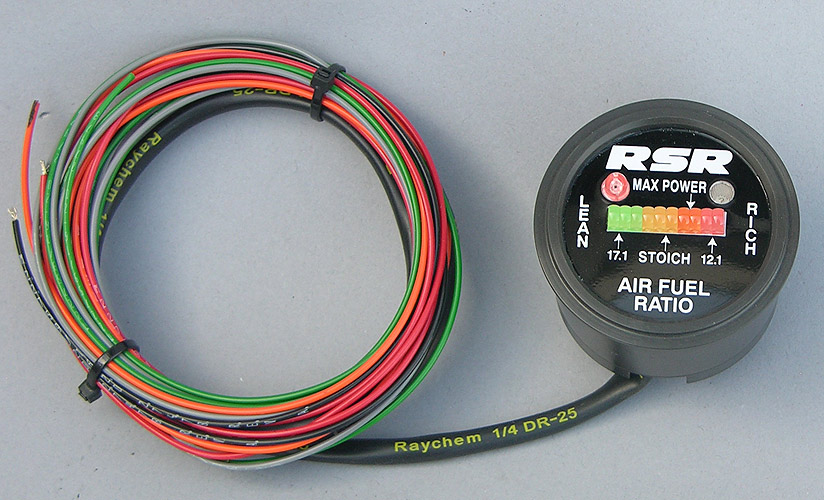
Single RSR O2 Gauge: Reads the front cylinder in non-efi models. It is simply the best way to evaluate the tune of your motorcycle and saves expensive and often inaccurate dyno time. Real world tuning while you ride...Observe and then make adjustments. Mounted permanently. Waterproof.

Mounts....Roll Your Own or Buy One
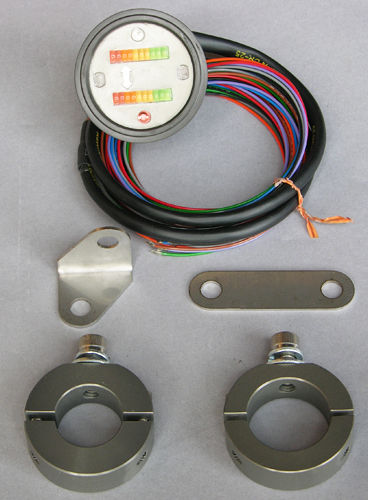
The gauges have a center back mount 5/16" x 18 x 1/2" Stainless Socket Head Cap Screw and stainless lock washer. You can fab your own bracket for this or use the 06-1025 hard anodized Billet Mount System for either 1.00" or 1.25" handlebars $49.95. Optional is the 06-1024 two piece laser cut 304 Stainless Steel mounting tabs for either near handlebar clamp or up the handlebar mounting: $9.95.
Since we have been doing closed loop fuel injection systems
for Harleys for more than 30 years and have been putting O-Sensor Ports
in our exhausts for the same amount of time, we have both single and dual O2 ports for our full range of exhausts. Our RSR Air Fuel Ratio Gauge is the best investment you can make for monitoring and optimizing your engine tune.
All
LSR 2-1 exhausts come standard with one or two O2 ports (Sequential EFI models)...18mm or 12.5mm. O2
or Lambda sensors
are a necessity for either carbureted or non closed loop efi
(Weber Marelli and Early Delphi) Harleys. We should know, as we have a
lot of experience
with them and have been doing Closed Loop EFI systems since 1989.
The Single and Dual gauges ship with six feet of MIL-W-22759/32 wire. The first 24" is Raychem DR-25 sealed on both ends. If you wish to have a connector at the 24" point there is a $50.00 charge to install either six position (single gauge) or eight position male/female Deutsch DTM connectors with Raychem DR-25 sleeving.
The gauge is housed in a hard anodized round enclosure in a standard 2" format with a 2.250" bezel, center back mount, with a 5/16" x 18 stainless socket head cap screw. The gauge will show fuel ratios from 17:1 to 12.0:1 (or richer). The gauge is visible in daylight and automatically dims for nighttime operation. Only a single L.E.D. illuminates.
Very easy to interpret at a glance.
Scale is, left to right, lean to rich: three greens, three yellows, two
orange and two red l.e.d.s. You simply cannot "read" spooling digital
numbers.
The white arrow indicates the maximum power mixture, the second orange light, which is 13.2:1. Transitory enrichments should not, if the engine is warm (>200F Oil temp), go past the first red light. Readings at the far right side of the scale, the second red light, are simply too rich. Proper closed loop operation will cycle back and forth from green to orange around the center of the display.
It is simply the best way to evaluate the tune of your motorcycle and saves valuable dyno time. Mounted permanently. Waterproof.
Whether your bike is carb
or efi this is the best way to tune...By riding and observing, not on a
static dyno. Dynos are not exactly real world in terms of loads,
airflow, or transitionals, and even if you had a million dollar AC
Transient dyno room, you would still have to do real world testing. The
gauges are dead accurate and are millisecond fast responding which
makes it very simple to
interpret or remember, even at a glance, while you are dodging cars
watching for cops. We have a Superflow CycleDyn which gives a better real world correlation than other dynamometers but we still evaluate air fuel ratios when riding.
Anyone who tells you
optimizing tuning is easy is full of shit. Engineers at Ford say they
spend two years just perfecting tip-in or initial throttle openings.
Ride, observe,..then change or edit. Real world.
Pretty soon Harleys will all be watercooled then you really won't be able to tell the difference between Milwaukee and Hammatsu. "The Man" will be sniffing your butt and planting microchips and gps modules up your ass so they can mail you a speeding ticket and keep track of your movements. They already have data recorders on your car so they know what you were doing when the biggie happened. Brave new world. Monitor your engine to get the most out of it before the NSA monitors your tail pipe.
Customer Comments
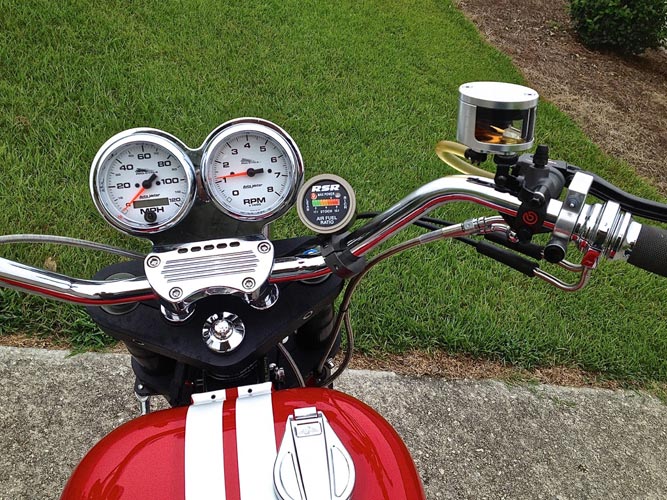
Customer writes: "When the gauge arrived I knew it would be of a very high quality, it has far surpassed my expectations. I was very eager to get this installed and take a look at my tune. Amazing to see how little adjustments on the carb effect the AFR. As a result of this gauge, I have dropped one size on the low speed jet, raised the clip on notch and confirmed the main jet on my Mik48. Thank you, I really like this gauge. Ed"
"Just wanted to follow up with you. This AFR gauge is a game changer. I think the tune on this bike is just about perfect, or as perfect as a one can get with a carb. I have every needle, main and idle jet available for the Mik48 and think I used everyone of them chasing the tune. Now with everything dialed in, warm idle will flicker between the orange and red light, cruise is at the left orange light and hard acceleration toggles between last orange and first red. Plugs look terrific, bike starts first thing in the morning without any choke, while riding around town the lights are relatively stable, some moving around but not much. Again, I couldn’t be happier with how this gauge works.
I am building a 124” TC to put into another FXR that I am building. This gauge is already on the build list, can’t imagine not having this gauge on any of my bikes. Thanks, Ed"